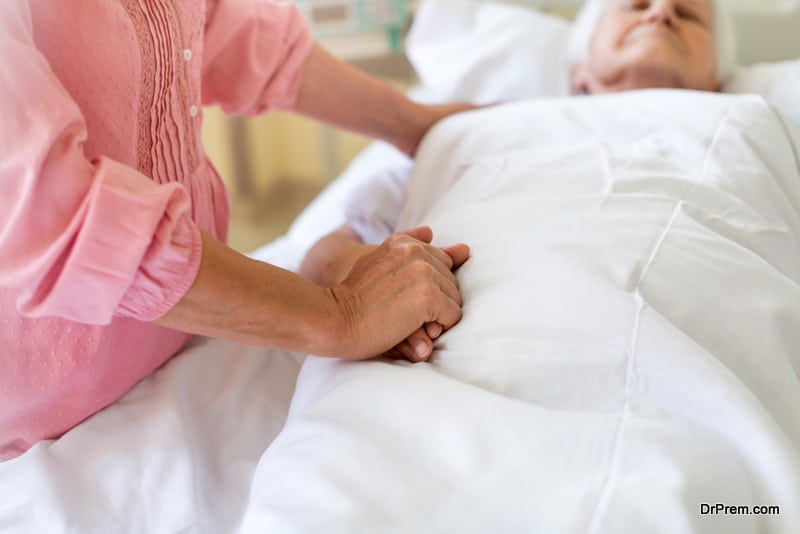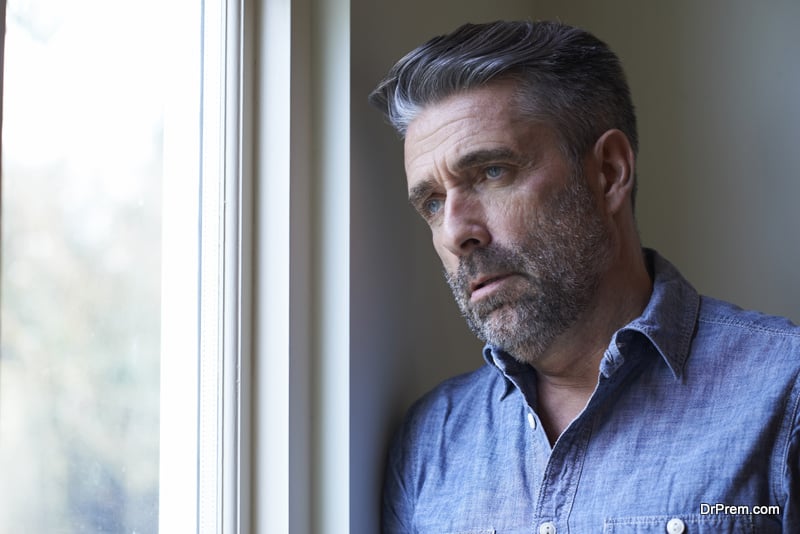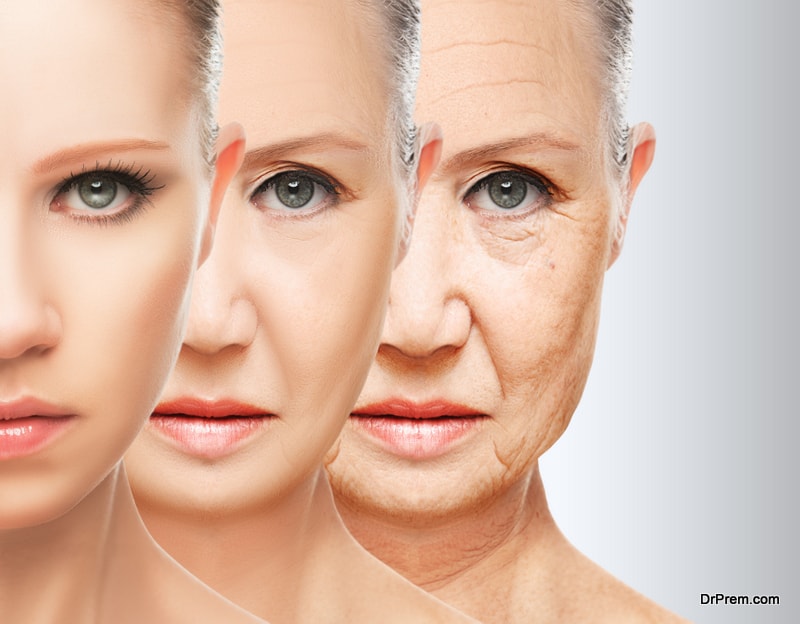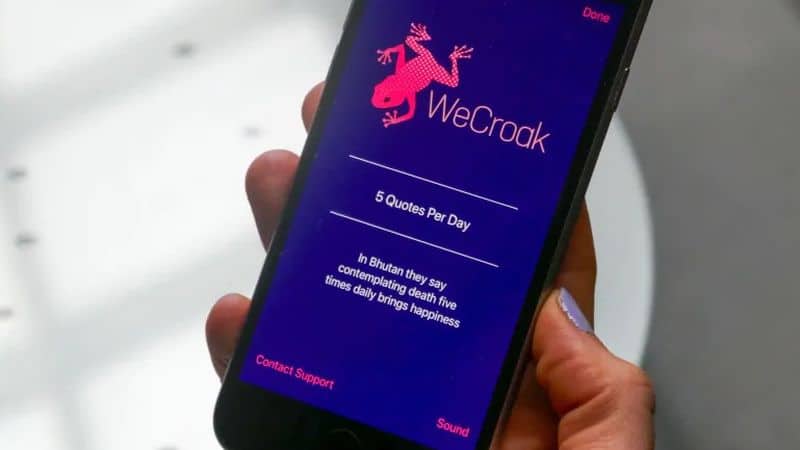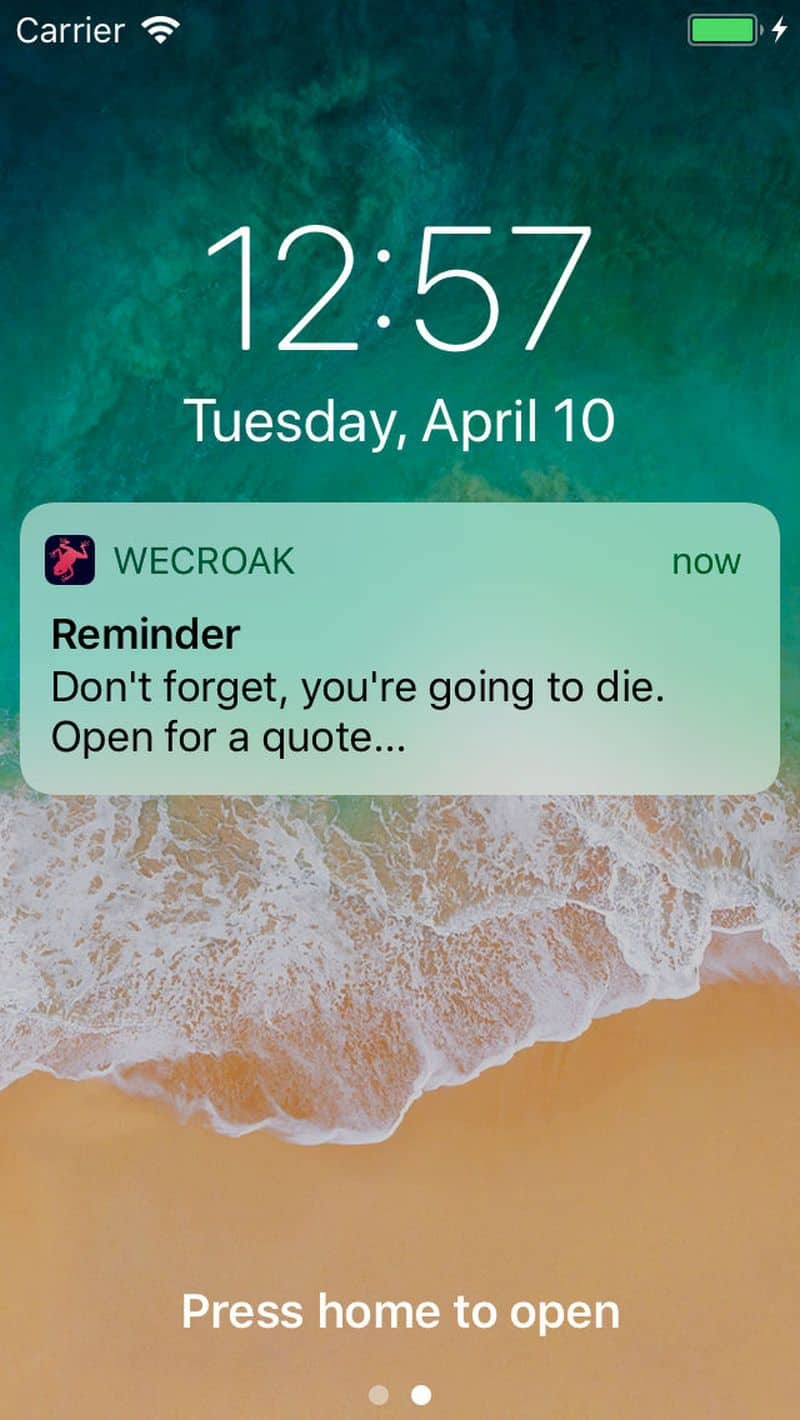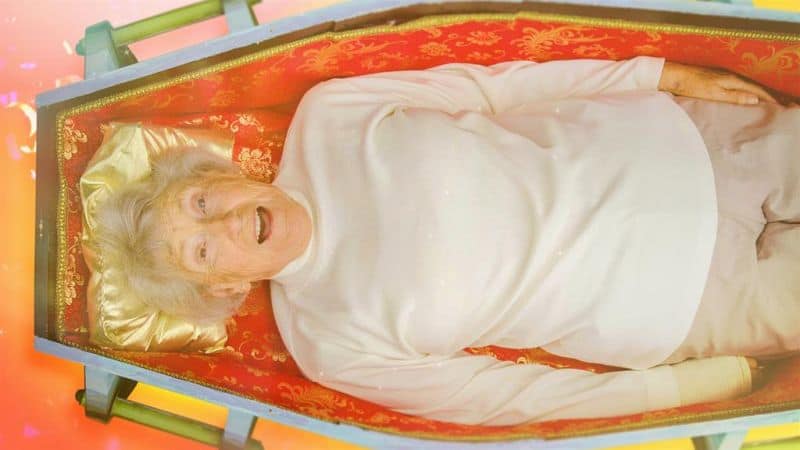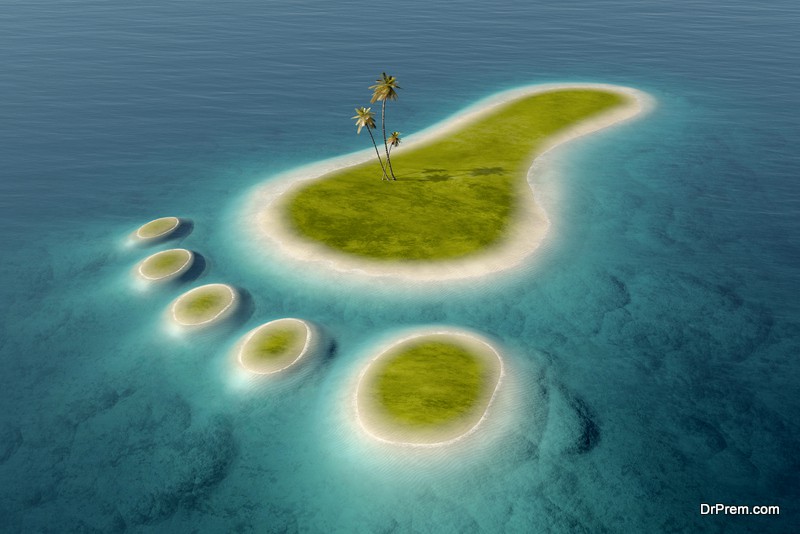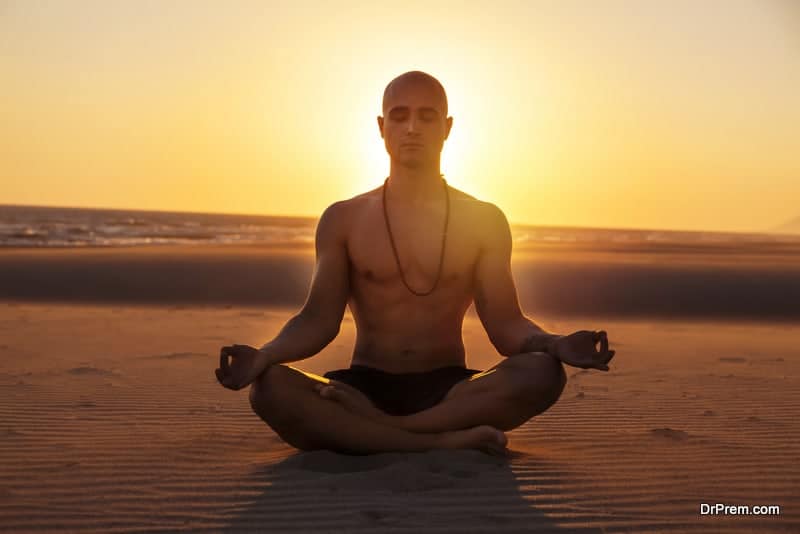Do not get startled if you by chance come across a smartphone notification of a passerby saying ‘Don’t forget. You are going to die’. No, he is not facing a death trial but traversing a way to wellness by taking a positive attitude towards death. Wellness is not all about living well but also dying well.
Dying well gaining pace in global wellness trend
-
Shunning death? What is the unseen obstacle to your wellness?
-
How does dying become a colder affair?
-
What is the evolution of the death-evading society and its impact?
-
Death positive movement –What is the growing trend of ‘The Art of Dying’?
-
What is rebranding death?
-
What is Swedish Death Cleaning?
-
WeCroak – What is a daily outing with death?
-
What is the rise of the Death Doulas?
-
What is hosting a Death Café?
-
How are death retreats or Grief retreats growing?
Wellness is too much about good health and quality of life. Is there any space for a good death? Why a fear factor is attached to death when we know it is the ultimate eventuality? If we work towards good health and a good life why not do the same for a good death? How many of us care for the ‘Art of Dying’?
56.4% of the Americans are ‘afraid’ or ‘very afraid’ of facing their loved ones dying. Leaving them aside, the situation is no different across the world. Death seems does not merit a discussion. But the situation is changing. A growing movement is pushing back this oxymoronic concept and accepting death with a positive mindset.
Shunning death? What is the unseen obstacle to your wellness?
Death occupies a remote position in our life. Nobody is willing to face death. The general mindset is such ‘Death should be avoided’. One hundred deaths happen in a minute but it has become severely scary and lonely.
We talk much about stress and anxiety and its ill effect on our well being. But death anxiety collectively is so massive that we don’t even dare to bring it up to the forefront. We prefer to keep our eyes shut actively to the most eventual outcome.
But as we say the more you repress it more it surfaces in manifested manner. The attitude towards death has become so unwell that we are seeing a major shift in viewing death. The Global Wellness Institute in 2019 declared dying well a significant wellness trend likely to grow stronger in the future.
Accepting death does not mean putting an end to wellness pursuits; only the perspective needs to be changed. Talking and discussing death makes you more proactive, more planned allowing you to live a fulfilling life without getting unnecessarily scared of the last days. Death is the most certain thing in our lifecycle, but very few think and plan about this phase.
How does dying become a colder affair?
Everybody wishes to breathe last in a loving and caring environment. Of late, it has become a kind of luxury. Dying in an ambience devoid of love and care is scary. Very few are fortunate to spend their last days in the comfort of their homes. Many are forced to forfeit this ‘luxury’ to a cold healthcare setting surrounded by unknown professionals and attendants to whom they are none but a patient tagged with a number.
The trend of ‘cold death’ perhaps initiated at the start of the 20th century with improved access to hospitals and nursing homes. Advanced medicine increased longevity. Family physicians faded to oblivion. Family members became too much preoccupied and could not spare time to see or provide care for their loved ones on day to day basis.
People took resort to hospitals and hospices where they got medicines and treatment but not the right kind of support to face death. Death became more unfamiliar and fearful as the family and social circle got disconnected.
This is perhaps a dark side of the advanced western medicine where dying has increasingly become a colder affair. Even the $20 billion funeral industry is not helping the case owing to the fast decline of formal religion. The communal healing rituals to soothe painful souls have set in oblivion.
What is the evolution of the death-evading society and its impact?
The obsession with wellness drove to evading death. Wellness is more focused on disease-free life to help in extending life-span. This is understandable given the alarming global healthcare burden showing no signs of receding. What about the two modern concepts driving the creation of a death-evading society?
One is the Silicon Valley biotech industry aiming to ‘cure death’ or even making it ‘optional’. The second is our wellness world constantly sending messages of do’s and don’ts and anti-aging tricks purposed to slow down our biological clock! It may sound good to be able to extend our life spans by decades but on the other way, it is creating a death-denial attitude that might not work well in the long run.
Will it ultimately be favorable for mankind given the fast depletion of earth’s resources and severe competition of survival? Won’t it create a more disparate society where only the super-rich and affluent can get access to the elixir of immortality?
Death positive movement –What is the growing trend of ‘The Art of Dying’?
Image Source : i.cbc.ca
People are embracing death positively by joining Death Café, Coffin-clubs or downloading WeCroak App. People are living their best by adopting this attitude. Dying a natural death without pressing too hard against aging should not be denied. Accepting natural outcomes is desirable; manipulation makes you unwell. We are already facing this terribly through environmental degradation.
Death Positivity Movement does not only mean a free discussion on death to break the fear-psychosis. It is more of taking control of it just like how we choose to live. If we can choose to live well according to our desire, we can also choose to die well. This completes the entire wellness journey.
Death can be friendly thanks to the people like Henry Fersko-Weiss who birthed the concept of ‘Death Movement’ viewing death through the ‘wellness’ lens. He is the pioneer of the ‘Death Doula’ concept and president of the International End-of-Life Doula Association (INELDA) focused on rebranding death.
Recently, this movement has been popularized by a mortician and author Caitlin Doughty in 2011 that aims to break the silence on death-related topics and eradicate the anxiety surrounding it. It also encourages diversity in the end-of-life care options to make dying a natural and worry-free happening.
The Order of the Good Death, the organization founded by Caitlin is against the censorship of death. The organization believes, families should have all rights on the bodies of their loved ones and make funeral choices free from cultural interventions. The end-of-life procedures need to be diversified from the existing practices.
What is rebranding death?
It is the baby boomers, biggest consumers of the wellness industry with a different intent in aging, are pioneering death positive movement. Controlling nearly 70% of disposable income, they are doing everything to live life well.
They are not evading death but are refusing to make it terrible. The concern is no longer on when we die but how we die. Death positive movement is garnering support from the millennials who value independence more than their predecessors. They want to be in charge of their death too!
Therefore, death is getting rebranded. Since ages, death has been shrouded with superstitions, myths and false beliefs. The common notion is, more we talk or think of death greater are the chances of having a rub with it. The time is ripe to reverse it. The more we talk or think of death better would be our wellness perspective.
What is Swedish Death Cleaning?
This gentle ‘Swedish’ art of freeing clutter from your life and mind shows you the path to wellness, but it also teaches you to embrace death lovingly. No unwanted scares, tensions and worries. The term is coined from the Swedish practice ‘döstädning’ – dö means death and städning – means cleaning.
The practice is to get rid of materialistic possessions that do not matter anymore in life especially during the last phase. Gradually, you grow a more positive outlook toward death. You become more mindful only on things that matter instead of clinging to unnecessary items. This helps you to enjoy a peaceful end possibly within your closed circle.
In a space where death is too hard a topic to be discussed or addressed, Swedish Death Cleaning helps in opening up a stress-free dialogue. One can even plan how to project himself/herself after death by passing a legacy. It also acts as a reminder that nothing lasts forever – neither our possessions nor us. It teaches you the value of impermanence.
WeCroak – What is a daily outing with death?
Image Source : static-s.aa-cdn.net
Consider this app that has wisely used a Tibetan principle to rebrand death. Thinking about death five times a day is the key to a happier life. Thinking deep, we could see a different perspective. We tend to mess with a lot of things that hardly matters! Countless moments of anger and stress not even important to us flow in our minds. But yes, willingly or unwillingly we get caught into the net.
But if we think of our mortality, we can just pause and bypass many undesirable situations. Just by saying, I don’t have time to indulge in these things brings great relief. We move on. It is a way to micro-adjust ourselves to make the best of the days left on this earth for us.
Interestingly, WeCroak has more than 9000 members mostly in the age group of the 20s and 30s. The app’s motto is to have a better grip on life by embracing mortality. You learn to value your wellness more.
What is the rise of the Death Doulas?
Studies reveal that 80% of the US citizens would prefer dying at home yet only 20% have that luck. 60% of them die in hospitals and the remaining 20% in nursing homes. People are refusing to accept the sad end of their lives amid hospitalization and loneliness distanced from the close circle.
Hospice care is serving only a very small fraction of the sick and ill. People are getting more clinical support at the end phase of life than emotional support while the latter is perhaps more important.
To bridge the gap between hospice care and medicine and emotional support, there has been a rise of practitioners called Death Doulas. The purpose is to make dying more humane than a mere biological event. Therefore, everything related to death from end care and funerals to mourning is getting reimagined. Their approach is similar to midwives or ‘Birth doulas’ coaching mothers to manage the newborn and herself.
Assisting in death:
Death Doulas coach people on death bed and other members of their families to cope up with the situation. They offer a range of services starting from the death-bed to the final journey providing physical, psychological, emotional and even spiritual support. They are often referred to as death-midwife, funeral guide, end-of-life coach, death-and-dying guide or thanadoula (formed by the combination of thanatology and death doula).
Their services can be as follows:
-
For the dying person:
Imagine the plight of a person counting his/her last days in a cold clinical setting fitted with lots of tubes and devices. He/she may be getting clinical support but what about the emotional factor? In such a setting, the companionship of a death doula is rewarding.
The death doula may simply hold the person’s hands, say a few compassionate or encouraging words to alleviate his/her mental agonies or be a good listener. A death doula can often go to the extent of addressing the dying person’s concerns and requirements. He/she may read out a book or talk about the person’s end-of-life wishes.
-
For the family members:
Not only the dying person but family members too need death coaching! Coping with the phase of a dying loving member is not easy. Parting is always sad. This is where emotional support comes to help. The continuity of death doula service remains in the pan-death spectrum that is before, during and after the death. It may be serving as a supportive communication bridge between family members and the dying person and making arrangements for the farewell.
Coffin clubs:
Image Source : pmdvod.nationalgeographic.com
If there could be planning and arrangements for birth and marriage, why not for death? This is the aim of Coffin Clubs – to make death more acceptable. Coffin Club founded by Katie Williams, a former nurse of palliative care ideated of creating her new coffin. If you can take interest in designing your wedding dress why not do the same for your coffin?
The idea generated massive interest. Initially, people aged 70-90 years having special carpentry skills joined the club of coffin designing. It turned out to be an exciting social event that helped in community bonding. Later, younger adults joined too in designing coffins for their parents and grandparents.
What is hosting a Death Café?
Death remains shrouded in enigma. More we try to unravel more it gets mysterious. Death defines our life. Therefore, it can stir a lot of interesting conversations. Death Café is a sort of activist platform where people can talk freely about death and make it appear comfortable not horrible. The objective is to create a positive awareness of death helping people to become familiar with the last phase of life.
How are death retreats or Grief retreats growing?
Wellness resorts around the world are including “death retreats” or “grief retreats” in their wellness programs to help people cope with the loss of near and dear ones. A widow grappling with the loss of her husband may find solace in a resort where she could share her pains and feelings with grief counselors or others with similar experiences but amid a real wellness ambience. Mind that could be difficult to control alone at home or even among peers could be calmed when there is a drastic change in the ambience.
These “death retreats” offer spiritual enhancement through mixed sessions of holistic wellness programs right from taking care of nutrition and other aspects of wellness. Yoga, hiking, community activities, meditation and journal writing are normally included in these retreats. It could also include light-hearted parties and serious endeavors like journaling grief experience. The aim of these retreats is not to offer ways to escape from the grief or sorrow but allowing you to connect with a community, place or group where you can relate to. The biggest advantage, you get your own space and pace to come to terms with the loss in a tranquil ambience which is neither overtly religious nor clinical. You get the right settings to validate your emotions instead of brushing it under the carpet. Interestingly, millennials are spending on expensive retreats to get on with their lives accepting death as a normal event.
Reimagining funerals- Green burials:
People are reimagining funerals beyond cultural and traditional barriers. I can choose the route of my final journey. This option remains open to other family members in case there is no such preference/restriction dictated by the deceased. It need not involve expensive and embellished coffins wrapped with flowers or the embalming ritual.
People are opting for green burials to cut down costs and carbon footprints. They prefer to go back to nature through green burials. Won’t it feel good to watch loved ones grow as trees from the mortal remains or ashes? It is like giving back life to the loved ones after death. Green burials of this sort help in creating a different perspective towards death.
Death positivity can be life-changing. Deaths can be calm and peaceful. Dying well is possible; the only thing is people need to be open to it instead of placing it in the must-avoid plane.


